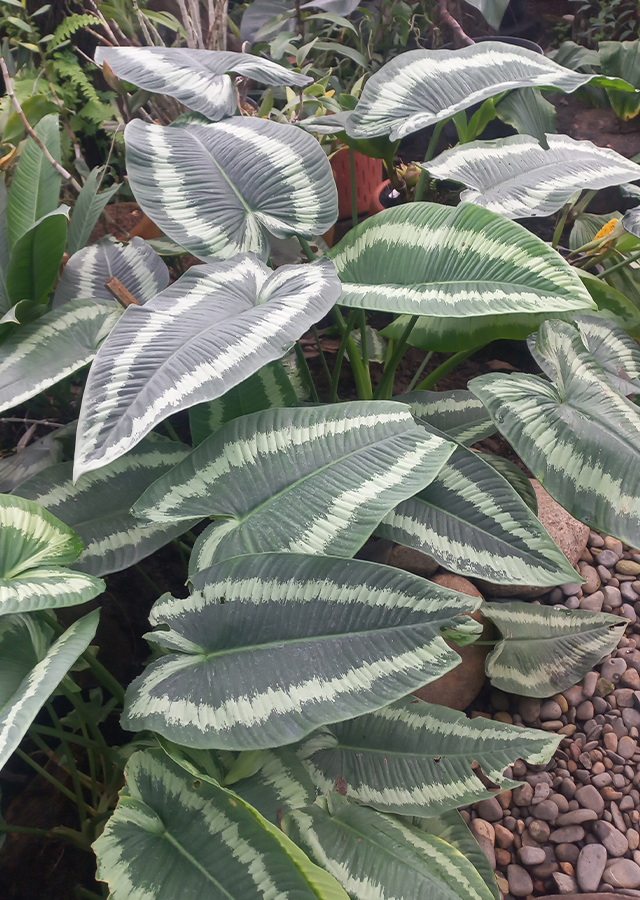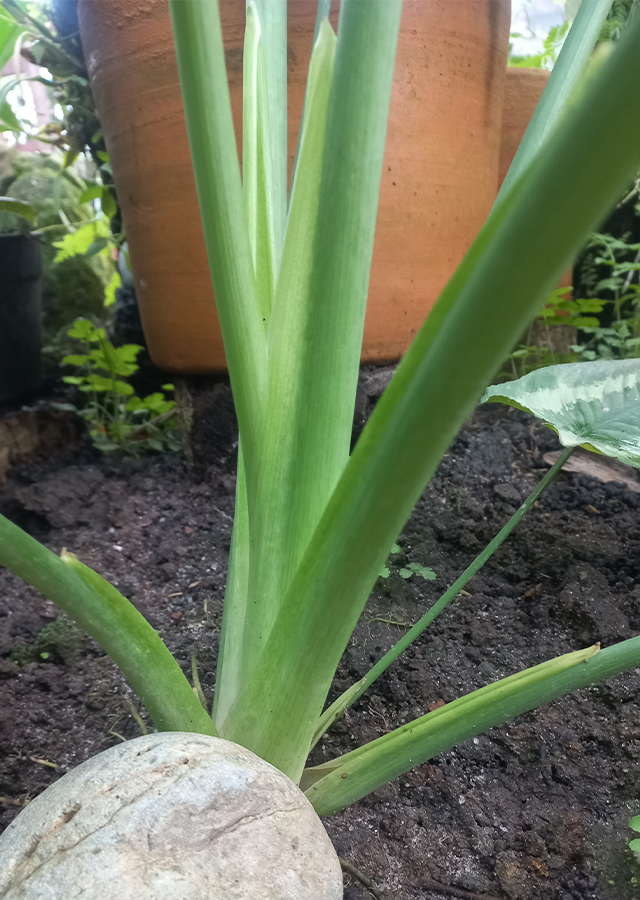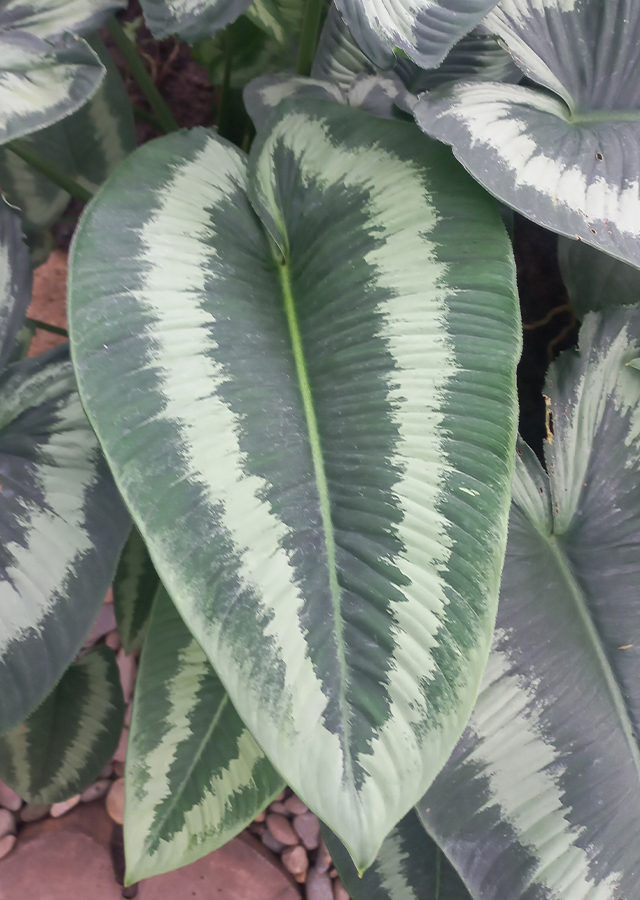Traditional Herbs from Schismatoglottis calyptrata
patah_tulang
- Take enough fresh leaves of slempetan, wash until clean.
- Crush until it becomes a paste.
- Apply on the affected area and wrap with gauze.
What is Schismatoglottis calyptrata Looks like??



Parts of Schismatoglottis calyptrata that could be used
- Leaves
- Stems
Schismatoglottis calyptrata Distribution
Slempetan is widespread in South China, throughout Southeast Asia (Burma to Papua New Guinea), to the Pacific Islands. This plant has been widely cultivated and planted as an ornamental plant in home gardens, city parks and offices. Apart from being an ornamental plant, slempetan has various values ??and functions for society. In Bali, this type, especially the tubers, is used as an ingredient in the Human Yadnya ritual, a sacred ceremony which aims to preserve life, achieve perfection in life and human well-being throughout life. Slempetan is also known to have been used as a vegetable in several countries. Like in Indonesia, especially in Java, where the young leaves, inflorescences and stolons are cooked and consumed as vegetables, while in Malaysia, the parts used as food are the roots and leaves. In its function as a medicinal plant, slempetan is one of the plants used in traditional medicine in China and Indonesia (West Java), namely its stems to treat lumbago (low back pain). This plant can also be used as fish food.Agroecology of Schismatoglottis calyptrata
Slempetan is usually found growing in the lower layers of dense tropical forests, damp and wet places, rocky places (living attached to rocks), humus soil in the forest, on river banks, moors, at an altitude of 300-1,400 m above sea level. This plant likes moist, well-drained soil, with a fertile clay texture, requires a lot of to moderate water, and is in a position in full or partial shade. If exposed to direct and continuous sunlight, the leaves will turn brown due to burning.
Morphology of Schismatoglottis calyptrata
- The roots are fibrous and have a uniform yellowish white color.
- Stems are upright and short, have a round stem shape and are not woody, with a purple to brownish color, have an elongated rhizome.
- The leaves are arranged in a rosette, the leaf blades are shaped like heart (cordate) to arrow (sagittate), sometimes variegated, green, smooth surface, flat leaf edges, Y-shaped vein pattern, green midrib, green, smooth, sheathed on the part bottom, about 50 cm long.
- Flowers are cream or white, male and female flowers are arranged in stalked inflorescences Cream colored to greenish yellow. The cob is narrow in the middle, white, measuring 3/4 of the length of the sheath, the top part will break off after the anthesis period has finished.
- Fruit berries, green in color and turn orange when ripe, fleshy, shiny surface.
- Oval seeds are whitish and numerous.
Cultivation of Schismatoglottis calyptrata
Propagation is generative through seeds, or vegetatively through stem cuttings and separation of seedlings.
Schismatoglottis calyptrata, more details :
Chemical Content of Schismatoglottis calyptrataFlavonoids, terpenoids, steroids.
Benefits of Schismatoglottis calyptrata
Treats back pain (lumbago), broken bones, joint pain (arthralgia), and wounds.
Simplisia of Schismatoglottis calyptrata
Another Facts for Schismatoglottis calyptrata :
Synonym of Schismatoglottis calyptrataCalla calyptrata Roxb., Homalomena calyptrata (Roxb.) Kunth, Zantedeschia calyptrata (Roxb.) K.Koch
Habitus of Schismatoglottis calyptrata
Herb. Annual herb, up to 60 cm high
Habitat of Schismatoglottis calyptrata
- Forest
- Rocky Area
- Land
No comments:
Post a Comment